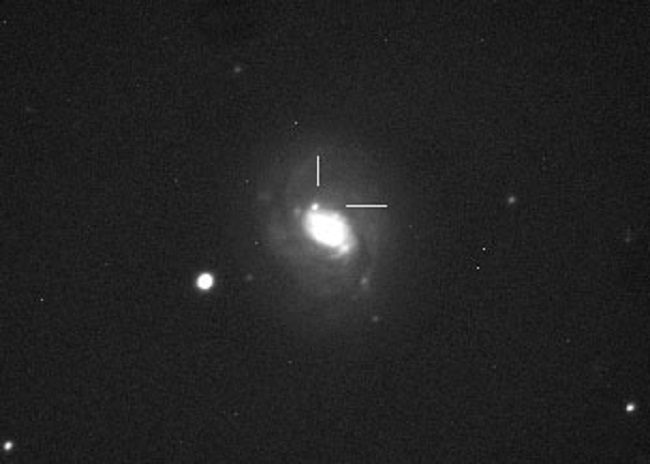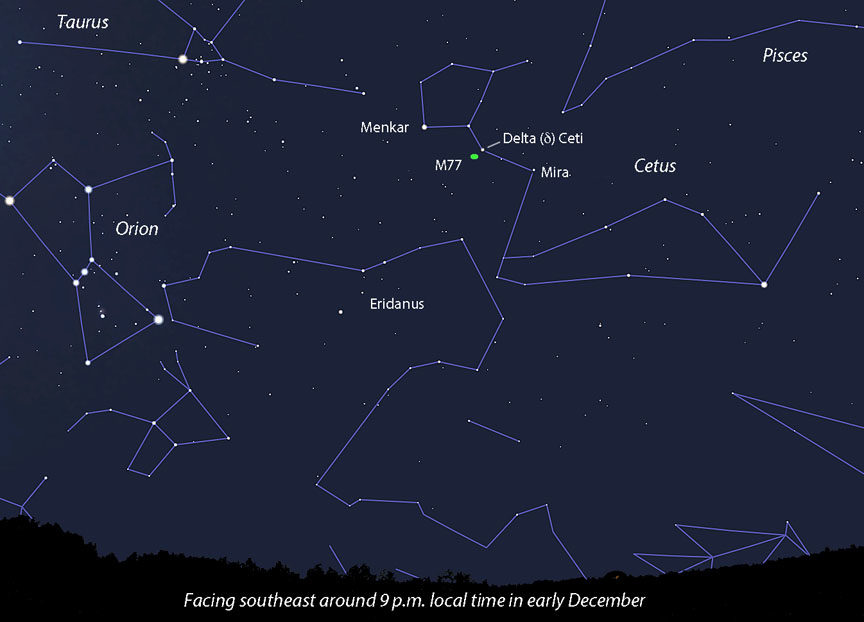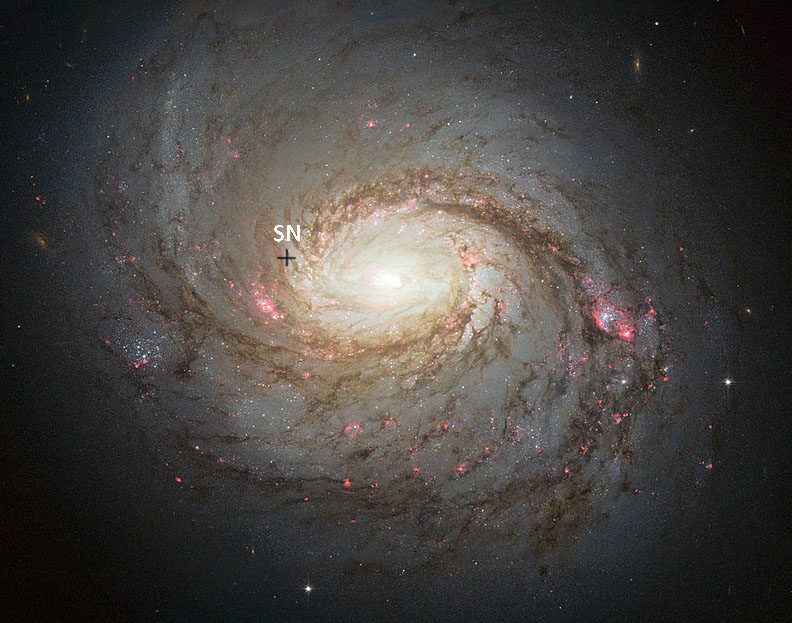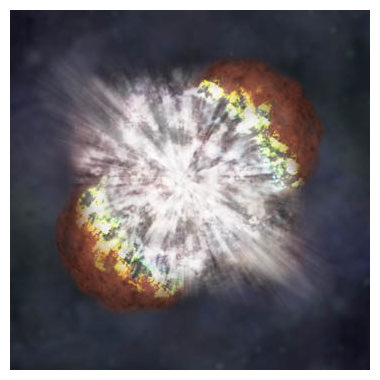
© Koichi ItagakiNew supernova 2018 ivc recently appeared in the bright Messier galaxy M77 located in Cetus at R.A. 2h 42′ 41″, Dec. -00° 00′ 48″. The object is northeast of the core along the edge of the bright inner disk.
a bright, barred spiral galaxy in Cetus located 50′ southeast of 4th magnitude Delta Ceti. Whenever a supernova is discovered in a Messier galaxy, I get excited. Messiers are among the closer and brighter galaxies and often host supernovae visible in smaller telescopes.
With an apparent magnitude of 9.6, M77 is easy to find in telescopes as small as 3 inches though a 10-inch or larger scope will be needed to ferret out this supernova - at least at the moment.
Designated 2018 ivc, the new supernova has brightened to about magnitude 14.5 and appears as a tiny pinprick of light 8.7″ east and 16.1″ north of the center of the galaxy along the edge of the bright inner disk. Spectroscopy reveals the "new star" as a Type II supernova in its early stages, implying that the object could brighten further. Not to throw water on the fire, but intervening dust within the galaxy has dimmed and reddened the explosion, so it's difficult to predict how bright it might become. One outlier observation from November 25th put it at about magnitude 13.6.

© StellariumUse this map to locate Delta Ceti and the supernova host galaxy, M77. While you're in the neighborhood, take a look at the variable star Mira, now rising toward maximum with a current magnitude of about 4.0.
and though it looks like little more than a faint star in a telescope, the reality is we're witnessing the collapse and explosion of a highly evolved supergiant star. As you read this, debris from the blast is expanding outward at some 13,500 kilometers per second (30.2 million mph). For perspective, that's a little more than one Earth-diameter per second! Going along for the ride are the complex elements that were forged in the star's core and now released into space to seed future generations of stars and their planetary systems.

© NASA / ESA / A. van der HoevenI've marked 2018 ivc's location with a cross in this photograph taken by the Hubble Space Telescope. You can see the object is situated within the galaxy's dusty inner arms.

© NASA / CXC /M.WeissIn a Type II supernova, an aging supergiant star runs out of nuclear fuel to burn in its core, causing a sudden collapse and rebound that rips the star apart. Some Type II events leave a neutron star or black hole remnant.
M77 lies 47 million light-years from Earth in Cetus. After all those years of travel, how fortunate that the light from the supernova arrived just in time to track it down without a bright moon and the galaxy well-placed for viewing during evening hours.
To find it, start with Menkar (magnitude 2.5), the second brightest star in Cetus, and slide about 2° to the southwest to Delta (δ) Ceti. Set Delta off to one side of the low-magnification field of view and you should see M77 on the opposite side less than a degree to the southeast.
To dig out the stellar cinder I recommend increasing the magnification to 200x or higher and studying the location along the bright, inner disk for a stellar point - this will be the supernova. Never fear magnification - you may need to go north of 300x depending on whether 2018 ivc brightens further or not. If seeing is poor, it can be difficult to suss out the star in a bright, galactic environment. Try again on another night.
Coincidentally, the bright comet
46P/Wirtanen passes about 7° southeast of the galaxy on the nights of December 8th and 9th.
For updates, head over to David Bishop's excellent
Latest Supernovae page and click on the 2018 ivc link. I'll also update this blog with additional information including my own observation of the supernova which I hope to make tomorrow night.







Reader Comments
to our Newsletter